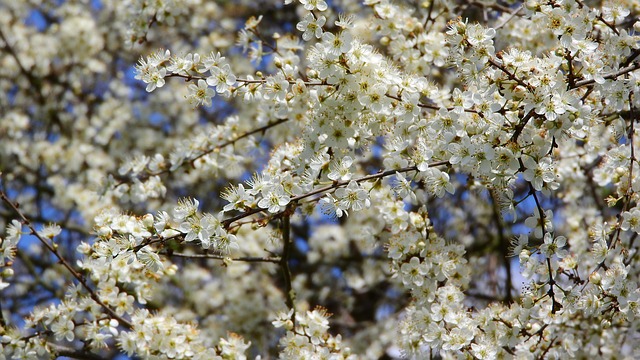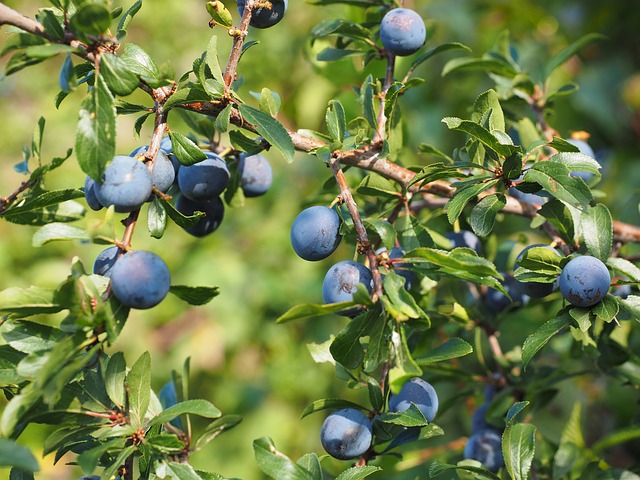Sloe (Prunus spinosa), or plum sloe, is a shrub or small tree. It belongs to the rose family. It is usually about 2 meters tall. 8]
Sloe can be planted almost anywhere in the garden. It depends on your preference and the size of your garden. It can be planted in full sun or shade. It is tolerant of both drought and frost. It has an abundant root system and its long roots form many shoots. Can be used to reinforce slopes and embankments. In the wild, it often forms thickets covering large areas. In the garden, it can be planted singly or in groups, for example as a hedge. Of course, it needs to be trimmed from time to time. This is the end of the care for this plant. There is no need to take care of it. No fertilizer or spraying is needed.
Sloe produces beautiful flowers and fruits
Sloe has beautiful white five-petaled flowers. They bloom in abundance in early spring. The size is about 1.5 cm. It often grows in overhanging areas around the perimeter and sometimes grows alone. After fertilization, the flower becomes a spherical kernel. The flowers ripen from October to November. They have a distinctive blue-black color and are approximately 1 to 1.5 cm in diameter. The large kernel, which contains seeds, is very difficult to separate from the pulp. The spikelets are bitter and sour. However, consumers, including birders, know that they taste best when frozen.
Uses of Natamame
Natamame is good for one\’s health. A tea made from the flowers has diuretic properties and is good for constipation and colds. If the fruits are to be harvested, they must be harvested before the birds. In other words, they must be harvested before the first frost. They can be eaten raw, but they can also be made into jam, wine, liqueur, or brandy. It is also suitable for preservation. In the past, the juice of the sloe was used to dye fabrics. It gave the fabrics a permanent light blue color. Sloe wood is reddish white with a brown heartwood. It is hard. It is used as a stick wood and is also suitable for turning.
The buckthorn as an important element of the ecosystem
This shrub or tree attracts birds. Birds nest in these trees and are excellent forage when the fruit is ripe. Bees and butterflies are attracted to the sweet nectar of the flowers. Thus, buckthorn brings a wide variety of plants to the garden.